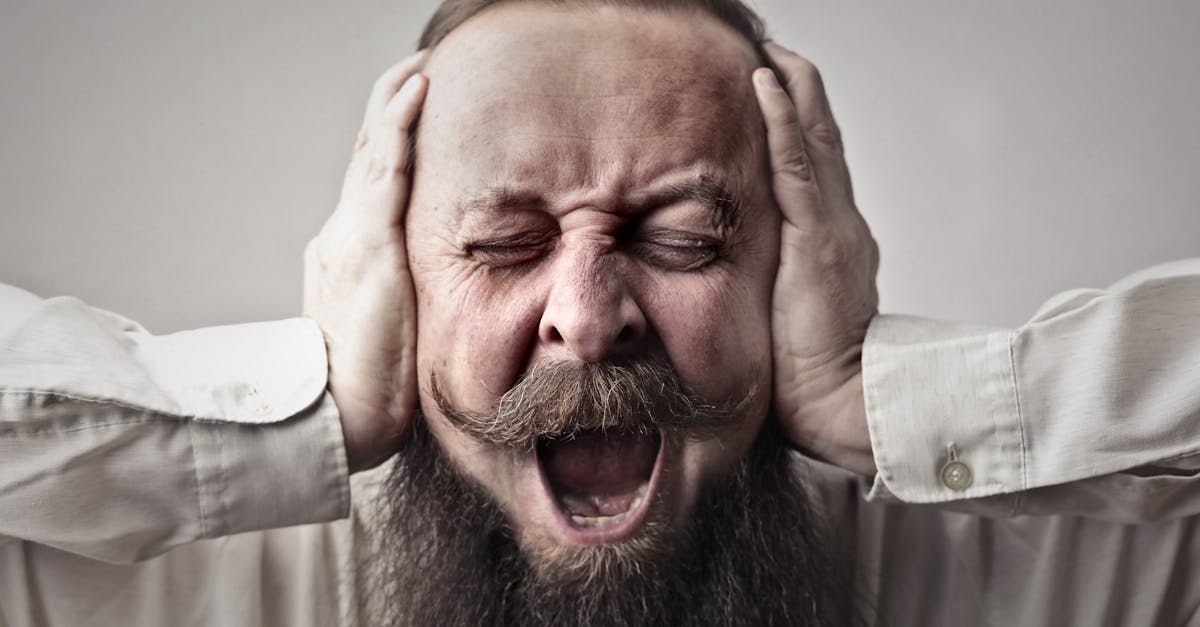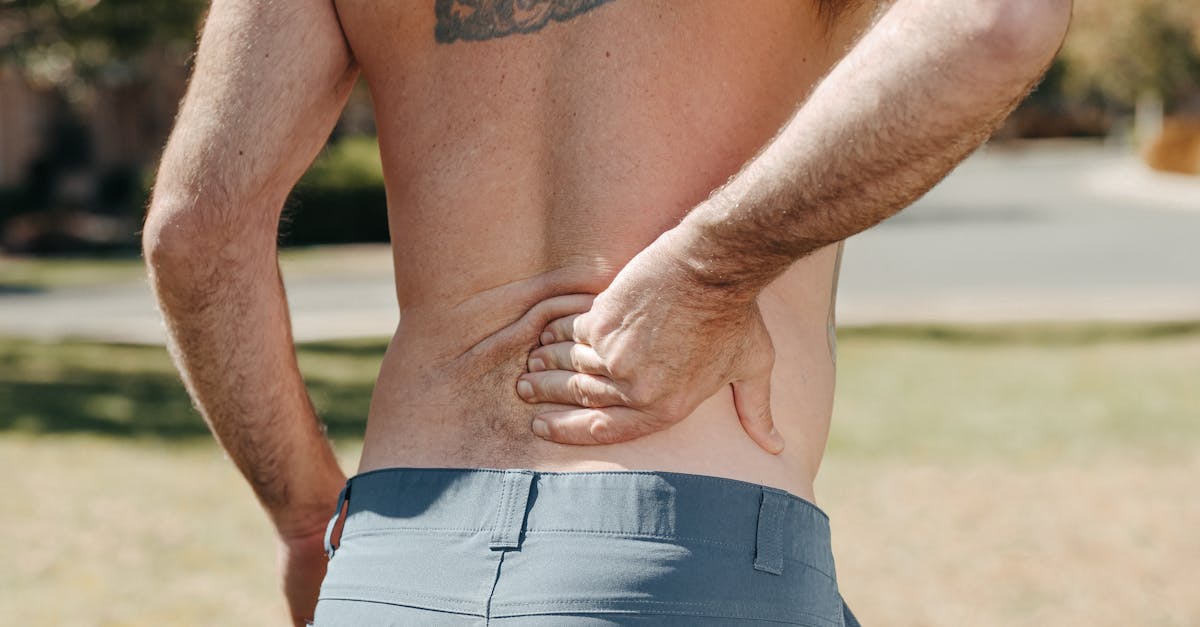In Short, understanding the underlying causes of migraines is crucial for those seeking relief from their debilitating effects. This article explores the genetic and environmental factors that contribute to migraines, emphasizing the importance of identifying triggers such as stress, hormonal changes, and dietary influences. By recognizing these factors, individuals can implement effective coping strategies to manage their symptoms better. The knowledge gained from this article empowers migraine sufferers to take control of their health, ultimately leading to improved quality of life. |
Migraine attacks are complex phenomena with a plethora of potential causes. While the exact mechanisms remain elusive, factors such as genetics, environmental triggers, and neurotransmitter fluctuations interplay to incite these debilitating episodes. Common triggers include stress, weather changes, and certain foods, underscoring the importance of understanding personal patterns. Identifying these triggers can significantly aid in managing the frequency and severity of migraines. Resources are available to assist individuals in pinpointing their specific triggers and improving their quality of life.

Pulse Align offers a gentle, non-invasive method that promotes overall well-being by restoring the body’s natural balance and posture through gentle pulses. Clients often report a sense of restored comfort and improved posture as a result of this innovative approach.
The Method Behind Pulse Align
At the heart of Pulse Align’s philosophy is the belief that the body has the innate ability to recalibrate itself. By focusing on restoring muscle tone symmetry and fostering improved posture, clients can often experience reductions in common tensions or discomforts that may affect their daily lives. This method is more about enabling the body to function optimally rather than targeting specific symptoms directly.
A Personalized Wellness Experience
Every client’s journey with Pulse Align is unique, drawing upon their individual experiences and needs. Testimonials highlight how clients have observed noticeable improvements in areas such as neck and back tension, creating a sense of balance and overall wellness. This client-centric approach ensures that every session considers the whole person, cultivating a path towards a more harmonious state of being.
Book Your Consultation Today
Ready to embark on your journey towards enhanced well-being? Visit Pulse Align’s website to learn more about our services and find a clinic near you, including locations in La Prairie, Mont-Royal, and Terrebonne. Our services are designed for the entire family, ensuring a warm and inviting atmosphere for all. Book a consultation today and experience the safe, family-friendly approach of Pulse Align, complementing your existing wellness journey without replacing your healthcare team.
- Genetic Factors: Family history may increase susceptibility.
- Environmental Triggers: Changes in weather and light exposure can provoke attacks.
- Hormonal Changes: Fluctuations in hormones, particularly in women, can lead to migraines.
- Stress and Anxiety: Emotional stress is a common trigger for many individuals.
- Dietary Influences: Certain foods and beverages, including caffeine and alcohol, can be culprits.
- Sleep Patterns: Irregular sleep can exacerbate migraine occurrences.
- Neurological Activities: Abnormal brain activities may initiate migraine episodes.
- Physical Exertion: Strenuous activity can sometimes trigger migraine attacks.
- Medication Side Effects: Certain medications may lead to migraine headaches.
- Health Conditions: Underlying conditions like hypertension can increase migraine frequency.

Migraines can be debilitating for those who suffer from them, often impacting daily activities and quality of life. While the exact origins remain a mystery, research indicates that a combination of genetics, brain activity, and environmental factors contribute to these intense headaches. Understanding these underlying causes and identifying potential triggers can help individuals manage their symptoms more effectively.
Understanding Migraines
A migraine is characterized by severe, throbbing head pain, typically on one side of the head. Alongside the pain, individuals may experience nausea, sensitivity to light, and changes in vision. The pain is often preceded by a range of symptoms known as auras, which can include visual disturbances, tingling sensations, or difficulty speaking. These indications highlight the complexity of migraines and the necessity for comprehensive management strategies.
Genetic Factors
Research suggests that genetics may play a significant role in the development of migraines. Individuals with a family history of migraines might be more susceptible to experiencing them. Inherited traits can influence the brain’s sensitivity to stimuli, which may trigger a migraine. By recognizing familial patterns, individuals may gain insights into their personal triggers and the likelihood of experiencing migraines.
Environmental Triggers
Environmental factors frequently contribute to migraine occurrences. Changes in weather patterns, exposure to bright lights, or exposure to strong smells can initiate a migraine. Additionally, lifestyle choices, such as poor sleep management, can exacerbate symptoms. Identifying these external triggers requires careful reflection and a proactive approach in maintaining a suitable living and working environment.
Biochemical Influences
Changes in the brain’s chemistry may also lead to migraines. Fluctuations in hormones are especially pertinent for many women, as hormonal shifts during menstrual cycles, pregnancy, or menopause can trigger migraines. Furthermore, neurochemical disruptions—particularly related to serotonin—can contribute to migraine onset. Recognizing these biochemical influences aids individuals in understanding and managing their symptoms, particularly during vulnerable periods.
Identifying Triggers
To effectively manage migraines, one must identify personal triggers. Keeping a migraine diary can be an instrumental strategy. Documenting headache occurrences, associated symptoms, and potential environmental factors can reveal patterns, making it easier to pinpoint specific triggers. This knowledge empowers migraine sufferers to make informed lifestyle choices and take preventative measures.
Health Management Strategies
Incorporating a comprehensive health management strategy can help in alleviating migraine symptoms. Techniques such as stress management through mindfulness practices, maintaining a consistent sleep schedule, and recognizing the impact of nutrition can play essential roles in preventive care. Additionally, exploring the benefits of neuromodulation therapies may provide revolutionary support for those with chronic migraines.
Understanding the underlying causes of migraines and identifying personal triggers is paramount for effective management. Each migraine journey is unique, influenced by a web of genetic, environmental, and biochemical factors. By adopting an approach that integrates awareness and proactive health strategies, individuals can foster a supportive environment for their neurological health. Embracing the principles of Pulse Align allows for enhanced neuromuscular health, symmetry, and recalibration of the nervous system, creating a path toward better quality of life.
Understanding the Triggers and Causes of Migraines
| Type of Cause | Description |
| Genetic Factors | Family history may increase the likelihood of experiencing migraines. |
| Environmental Triggers | Bright lights, strong smells, or weather changes can provoke attacks. |
| Hormonal Changes | Fluctuations in hormones, especially in women, often trigger migraines. |
| Stress and Anxiety | High-stress levels and anxiety can lead to increased migraine occurrences. |
| Sleep Patterns | Both insufficient and excessive sleep can serve as migraine triggers. |
| Dietary Factors | Certain foods and drinks, like aged cheese and caffeine, may induce migraines. |
| Neurological Changes | Abnormal brain activity can alter nerve function and pressure leading to migraines. |
| Physical Exertion | Strenuous activities or vigorous exercise can trigger migraine episodes. |

Transformative Wellness Journeys with Pulse Align
Clients who have ventured into the process of understanding the underlying causes of migraines have reported profound changes in their lives thanks to Pulse Align’s innovative approach. By focusing on holistic and natural recovery methods, clients find relief while enhancing their body’s intrinsic ability to recalibrate and restore balance.
Many individuals from areas such as La Prairie have shared their positive experiences, indicating a noticeable improvement in migraine management. These clients attribute their success not only to the tailored strategies provided by Pulse Align but also to the supportive community that fosters a sense of belonging and hope.
In regions like Mont-Royal and Châteauguay, clients have taken advantage of Pulse Align’s focus on identifying migraine triggers and facilitating natural recovery processes. The feedback consistently highlights that the expert guidance received aligns impeccably with their wellness goals, resulting in reduced occurrences of headaches and a better quality of life.
Moreover, residents in areas such as Saint-Jérôme and Deux-Montagnes have reported feeling revitalized after committing to Pulse Align’s comprehensive program. The foundation laid by understanding one’s own body contributes significantly to the empowerment clients feel as they navigate their wellness journeys.
With a focus on collaboration, Pulse Align ensures to work alongside healthcare teams to provide multifaceted support, extending the wellness conversation into family dynamics and community engagement. This dedication speaks volumes to the holistic philosophy embraced by the organization, offering a breath of fresh air to clients seeking understanding and improvement.
As clients from Chicoutimi to Sainte-Marie confidently share their empowering stories, it becomes evident that the commitment to comprehending the causes of migraines pays off. Many have found a newfound sense of balance, equipping themselves with the knowledge to live more fulfilling lives.
To explore more about how Pulse Align can enhance your wellness journey, visit Our Clinics and see the supportive resources available to guide your path toward healthier living.
Migraines are a complex neurological condition affecting millions worldwide, characterized by intense, often unilateral throbbing pain and accompanied by various symptoms such as nausea, sensitivity to light, and even visual disturbances. The underlying causes of migraines remain an active area of research, with a blend of genetic, environmental, and physiological factors contributing to their development. Despite extensive studies, the precise mechanisms triggering these debilitating episodes are not entirely understood. However, a multifaceted approach to identifying potential causes has emerged as a crucial aspect of effectively managing migraines.
One of the primary components believed to influence migraine onset is genetics. Research indicates that individuals with a family history of migraines may have a higher predisposition to experience them. Specific genes correlated with migraine susceptibility have been identified, highlighting the significance of hereditary factors in migraines. Moreover, certain environmental triggers, such as bright lights, weather changes, and strong odors, can exacerbate symptoms. Individuals often have unique, personal triggers that they must discern to manage their condition effectively.
Hormonal fluctuations are another significant factor in understanding migraines, particularly in women. Menstrual cycles, pregnancy, and menopause can all impact the frequency and intensity of migraines due to shifts in hormone levels. These variations can lead to what some call menstrual migraines, a term used to describe migraines linked with the menstrual cycle. Consequently, monitoring hormonal changes can help those affected by menstrual-related migraines gain insights into their patterns and triggers.
Stress is a widely recognized precipitant of migraines as well. The body’s response to stress can lead to increased muscle tension and changes in neurotransmitter levels, which may trigger an episode. Identifying stressors and mastering relaxation techniques, such as meditation, yoga, or deep-breathing exercises, can help minimize their impact on migraine occurrences. Research also suggests that emotional triggers like anxiety or depression could aggravate the situation, further complicating the challenge of managing migraines.
Sleep disturbances are closely linked to migraines as well. Irregular sleep patterns, lack of sufficient rest, or even excessive sleep can serve as potential triggers. Maintaining a consistent sleep schedule and fostering a restful sleep environment may prove beneficial for those susceptible to migraines. Moreover, dietary factors also play a significant role in the occurrence of migraines. Certain foods, including aged cheeses, processed meats, and excessive caffeine, are often reported as triggers. Keeping a detailed food diary can help individuals identify dietary triggers more effectively.
The involvement of the nervous system is critical when studying migraines. Changes in brain activity can lead to alterations in blood flow and inflammation of surrounding tissues, which may induce a migraine episode. Understanding neurological differences can aid individuals in uncovering their personal migraine patterns. Consulting with healthcare professionals specializing in chronic pain management, such as those at TAGMED clinics, can provide valuable insights into emerging treatments that integrate advanced technologies, such as spinal decompression and laser therapy. This evidence-based approach aims to enhance the overall well-being of those suffering from migraines.
Ultimately, while pinpointing the exact cause of migraines can be daunting, breaking them down into categories based on triggers, physiological conditions, and genetic predispositions may help individuals find relief. Employing a comprehensive strategy to recognize patterns and seek expert assistance enhances the likelihood of achieving effective migraine management.
Neurovertebral Decompression Technology by TAGMED
Mechanism of Action
The neurovertebral decompression technology offered by TAGMED operates by applying a controlled and progressive traction force on the spine. This method works to increase the space between the vertebrae, helping to relieve pressure on intervertebral discs and nerve roots. As the distance between the vertebrae increases, circulation of fluids in the targeted area improves, facilitating necessary nutrient exchange and waste removal. Consequently, this process helps to reduce inflammation and alleviate pain. The mechanism fundamentally aids in restoring the proper alignment and function of the spine, key factors in managing conditions such as herniated discs, bulging discs, and moderate to severe spinal or foraminal stenosis, as discussed in the article “The Underlying Causes of Migraines and How to Identify Them.”
Specific Benefits
This non-invasive treatment method proves to be highly effective for managing chronic pain and symptoms associated with the aforementioned conditions. By reducing pressure on the nerve structures and optimizing fluid circulation around the discs, TAGMED’s neurovertebral decompression approach encourages faster recovery rates and enhances overall quality of life for a wide range of patients. The gentle traction not only alleviates existing discomfort but can also potentially prevent the development of further complications, thus emphasizing the holistic benefits of the method.
Comparison with Other Treatments
When compared with other therapeutic approaches prevalent in the management of conditions highlighted in “The Underlying Causes of Migraines and How to Identify Them,” such as pain medications, corticosteroid injections, surgical interventions, or traditional physical therapy, TAGMED’s neurovertebral decompression displays several unique advantages. Most notably, it is a non-invasive technique that carries a significantly lower risk profile associated with medications and surgeries. Additionally, the recovery period is often much more accelerated, enabling patients to return to their daily activities sooner, all while experiencing lowered pain levels and improved functionality.
Case Studies and Testimonials
Numerous case studies reflect the positive impact of TAGMED’s neurovertebral decompression technology. For instance, patients have reported enduring pain relief and enhancements in their ability to perform daily tasks. Testimonials reveal stories of decreased reliance on pharmacological treatments and a notable resumption of active lifestyles. The tangible improvements reflect not only the effectiveness of the technology but also its potential to alter patients’ approaches to managing chronic pain and associated symptoms, making it a valuable consideration in their treatment plans.
Migraines are a complex neurological condition, with the exact causes remaining somewhat of a mystery. Recent research indicates that factors such as genetics and environmental influences may play significant roles in triggering these debilitating headaches. Numerous patients report experiencing throbbing pain typically localized on one side of the head, accompanied by various symptoms including nausea, light sensitivity, and, at times, aura-like phenomena.
Identifying the underlying causes of migraines is critical to developing an effective management strategy. While no single cause can be pinpointed, common triggers include stress, hormonal changes, and irregular sleeping patterns. Additionally, dietary components such as alcohol, caffeine, and aged cheese have been implicated in provoking attacks for some individuals. It’s essential for patients to maintain a detailed headache diary, documenting the onset of migraines, potential triggers, and accompanying symptoms. This process can be instrumental in recognizing patterns that correlate with migraine occurrences.
Moreover, understanding neurological factors that influence migraine pathways can aid in pinpointing individual triggers. Abnormal brain activity, often triggered by stress or environmental factors, may lead to an inflammatory response that amplifies pain signals. Neuroimaging can help differentiate migraines from other conditions, although it is not routinely utilized for diagnosis. Identifying whether light sensitivity or changes in atmospheric conditions trigger episodes can also provide valuable insights.
Ultimately, recognizing the combination of genetic predispositions and environmental factors is crucial in managing migraines effectively. Emphasizing a holistic approach that includes stress management, lifestyle modifications, and medical guidance will empower individuals in their fight against these pervasive headaches.

Do you suffer from a chronic condition that responds little or not at all to conservative treatments?
Discover a world of wellness at Pulse Align, where innovative, non-invasive methods meet holistic care. Our approach centers around gentle, imperceptible pulses designed to help restore the body’s natural balance and posture. Through this innovative technique, we support clients to address muscle and joint tension without traditional medical interventions, allowing the body’s innate healing capabilities to shine. By creating an environment for natural recalibration, we tackle common discomforts and promote well-being seamlessly.
At Pulse Align, the focus is not on discomfort or conditions directly but rather on empowering the body to recalibrate itself naturally. The gentle stimulation we provide is aimed at enhancing the body’s ability to restore balance and symmetry, often leading to incredible improvements in comfort and overall posture. By prioritizing this holistic approach, clients may experience remarkable transformations in how they feel on a daily basis.
Our personalized approach sets Pulse Align apart. Clients have shared testimonials illustrating notable improvements in areas such as neck and back tension, general well-being, and even balance and coordination. The stories resonate with those seeking a family-friendly solution to enhance their quality of life, and we take pride in being part of their wellness journeys. From young children to pregnant women, our services are suitable for everyone, paving the way for inclusivity and support.
We invite you to explore our offerings further by visiting the Pulse Align website. With locations in La Prairie, Mont-Royal, Terrebonne, and many more, finding a nearby clinic has never been easier. Book a consultation for yourself or your family today and take the first step toward a journey focused on harmony and well-being. Remember, our services work alongside your healthcare team without replacing any medical care but rather complementing it beautifully.
Frequently Asked Questions
Headache and Migraine
- Do migraines decrease after menopause?Often, migraine frequency reduces after menopause due to hormonal stability, but not always.
- Do migraine medications cause dependence?Not typically, but frequent use of analgesics can lead to rebound headaches.
- Does bright light trigger migraines?Yes, light sensitivity is common, and bright light can worsen a migraine attack.
- Should migraine sufferers avoid alcohol?Alcohol, especially red wine, can trigger migraines in some. Identify and avoid personal triggers.
- Are blue-light filtering screens useful?They reduce eye strain, potentially lowering headache risk.
- What’s the difference between a headache and a migraine?A headache is often less intense and short-lived, while a migraine is characterized by throbbing pain, sometimes with nausea, sensitivity to light and sound.
- Does cognitive-behavioral therapy help?Yes, it teaches stress and pain management techniques, reducing migraine frequency and intensity.
- What about ocular migraines?Migraines with aura can cause visual disturbances (flashing lights) before pain onset.
- Are migraines more common in women?Yes, hormonal fluctuations make women more prone to migraines than men.
- Can identifying triggers reduce migraines?Yes, keeping a headache diary helps identify triggers so you can avoid them.
Ethan Dubois is dedicated to shining a light on the hidden struggles of chronic headaches. As a Headache Awareness Advocate at Pulse Align, he combines compassionate storytelling with cutting-edge research to bring clarity, comfort, and hope to those affected. Ethan’s mission is to empower readers with knowledge, break through stigma, and foster a supportive community where every voice is heard. When he’s not crafting insightful articles, Ethan can be found exploring the latest wellness trends, sharing practical coping strategies, or simply lending a listening ear to those in need. His heartfelt approach and unwavering commitment to awareness make him a trusted ally for anyone navigating life with headaches.
References
- Pradhan, S., & Choudhury, S. S. (2018). Clinical characterization of neck pain in migraine. Neurology India, 66(2), 377–384. https://journals.lww.com/neur/fulltext/2018/66020/clinical_characterization_of_neck_pain_in_migraine.19.aspx
- Yu, Z., Wang, R., Ao, R., & Yu, S. (2019). Neck pain in episodic migraine: a cross-sectional study. Journal of Pain Research, Volume 12, 1605–1613. https://doi.org/10.2147/JPR.S200606
- Hvedstrup, J., Kolding, L. T., Ashina, M., & Schytz, H. W. (2020). Increased neck muscle stiffness in migraine patients with ictal neck pain: A shear wave elastography study. Cephalalgia, 40(6), 565–574. https://doi.org/10.1177/0333102420919998
- Kolding, L. T., Do, T. P., Ewertsen, C., & Schytz, H. W. (2018). Muscle stiffness in tension-type headache patients with pericranial tenderness: A shear wave elastography study. Cephalalgia Reports, 1, 2515816318760293. https://doi.org/10.1177/2515816318760293
- Balaban, M., Celenay, S. T., Lalecan, N., Akan, S., & Kaya, D. O. (2024). Morphological and mechanical properties of cervical muscles in fibromyalgia with migraine: A case-control study. Musculoskeletal Science and Practice, 74, 103185. https://www.sciencedirect.com/science/article/pii/S2468781224002807
- Zwart, J. (1997). Neck Mobility in Different Headache Disorders. Headache: The Journal of Head and Face Pain, 37(1), 6–11. https://doi.org/10.1046/j.1526-4610.1997.3701006.x
- Bjarne, B. (2024). NECK MUSCLE ELASTICITY IN CERVICOGENIC HEADACHE PATIENTS MEASURED BY SHEAR WAVE ELASTOGRAPHY [PhD Thesis, Ghent University]. https://libstore.ugent.be/fulltxt/RUG01/003/202/979/RUG01-003202979_2024_0001_AC.pdf
- Luedtke, K., Starke, W., & May, A. (2018). Musculoskeletal dysfunction in migraine patients. Cephalalgia, 38(5), 865–875. https://doi.org/10.1177/0333102417716934
- Choi, S.-Y., & Choi, J.-H. (2016). The effects of cervical traction, cranial rhythmic impulse, and Mckenzie exercise on headache and cervical muscle stiffness in episodic tension-type headache patients. Journal of Physical Therapy Science, 28(3), 837–843. https://www.jstage.jst.go.jp/article/jpts/28/3/28_jpts-2015-893/_article/-char/ja/
- Florencio, L. L., De Oliveira, A. S., Carvalho, G. F., Tolentino, G. D. A., Dach, F., Bigal, M. E., Fernández‐de‐las‐Peñas, C., & Bevilaqua Grossi, D. (2015). Cervical Muscle Strength and Muscle Coactivation During Isometric Contractions in Patients With Migraine: A Cross‐Sectional Study. Headache: The Journal of Head and Face Pain, 55(10), 1312–1322. https://doi.org/10.1111/head.12644
- Al-Khazali, H. M., Al-Sayegh, Z., Younis, S., Christensen, R. H., Ashina, M., Schytz, H. W., & Ashina, S. (2024). Systematic review and meta-analysis of Neck Disability Index and Numeric Pain Rating Scale in patients with migraine and tension-type headache. Cephalalgia, 44(8), 03331024241274266. https://doi.org/10.1177/03331024241274266
- Martínez-Merinero, P., Aneiros Tarancón, F., Montañez-Aguilera, J., Nuñez-Nagy, S., Pecos-Martín, D., Fernández-Matías, R., Achalandabaso-Ochoa, A., Fernández-Carnero, S., & Gallego-Izquierdo, T. (2021). Interaction between pain, disability, mechanosensitivity and cranio-cervical angle in subjects with cervicogenic headache: A cross-sectional study. Journal of Clinical Medicine, 10(1), 159. https://www.mdpi.com/2077-0383/10/1/159
- Al-Khazali, H. M., Younis, S., Al-Sayegh, Z., Ashina, S., Ashina, M., & Schytz, H. W. (2022). Prevalence of neck pain in migraine: A systematic review and meta-analysis. Cephalalgia, 42(7), 663–673. https://doi.org/10.1177/03331024211068073
- Calhoun, A. H., Ford, S., Millen, C., Finkel, A. G., Truong, Y., & Nie, Y. (2010). The Prevalence of Neck Pain in Migraine. Headache: The Journal of Head and Face Pain, 50(8), 1273–1277. https://doi.org/10.1111/j.1526-4610.2009.01608.x
- Fernández-de-las-Peñas, C., Cuadrado, M., & Pareja, J. (2006). Myofascial Trigger Points, Neck Mobility and Forward Head Posture in Unilateral Migraine. Cephalalgia, 26(9), 1061–1070. https://doi.org/10.1111/j.1468-2982.2006.01162.x
- Fernández-de-las-Peñas, C., Madeleine, P., Caminero, A., Cuadrado, M., Arendt-Nielsen, L., & Pareja, J. (2010). Generalized Neck-Shoulder Hyperalgesia in Chronic Tension-Type Headache and Unilateral Migraine Assessed by Pressure Pain Sensitivity Topographical Maps of the Trapezius Muscle. Cephalalgia, 30(1), 77–86. https://doi.org/10.1111/j.1468-2982.2009.01901.x
- Fernández‐de‐las‐Peñas, C., Cuadrado, M. L., & Pareja, J. A. (2007). Myofascial Trigger Points, Neck Mobility, and Forward Head Posture in Episodic Tension‐Type Headache. Headache: The Journal of Head and Face Pain, 47(5), 662–672. https://doi.org/10.1111/j.1526-4610.2006.00632.x
- Ashina, S., Bendtsen, L., Lyngberg, A. C., Lipton, R. B., Hajiyeva, N., & Jensen, R. (2015). Prevalence of neck pain in migraine and tension-type headache: A population study. Cephalalgia, 35(3), 211–219. https://doi.org/10.1177/0333102414535110
- Aoyama, N. (2021). Involvement of cervical disability in migraine: a literature review. British Journal of Pain, 15(2), 199–212. https://doi.org/10.1177/2049463720924704
- Lin, L.-Z., Yu, Y.-N., Fan, J.-C., Guo, P.-W., Xia, C.-F., Geng, X., Zhang, S.-Y., & Yuan, X.-Z. (2022). Increased stiffness of the superficial cervical extensor muscles in patients with cervicogenic headache: A study using shear wave elastography. Frontiers in Neurology, 13, 874643. https://www.frontiersin.org/articles/10.3389/fneur.2022.874643/full




